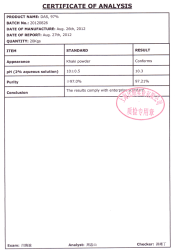Tod Gangler on pigments
I've had a chance to organize the last of my notes from my conversation with Tod Gangler last weekend, and supplemented with some findings of my own.
We talked about pigments a bit, and he introduced me to a concept known as "pigment shock". This was a new term to me, but apparently well known in the paints and industrial coatings universe. In doing a little digging on the 'net later, I found out that when introducing a pigment in suspension into a vehicle (in this case, our vehicle is melted gelatin), various interactions between the temperature of the 2 components, and physical interactions of the solvents/binders/etc. in each case can cause the pigment particles to flocculate, causing an increase in particle size (which also means a reduction in tinting strength) and a tendency to stain, due to larger particles being more likely to fall out of suspension.
For this reason, Tod recommends pigments in aqueous suspension (as opposed to watercolor tubes), and further recommends that the aqueous suspension be further diluted with water, (I assume to both reduce viscosity and concentration), and brought up to the temperature of the gelatin before incorporating.
With further regard to pigments, he noted that one of the pigment suppliers (manufacturers) he has used in the past has gone out of business, and he is not sure he could order in the same (relatively) small quantities from 2 others. For newcomers interested in color carbon, he recommended the Kremer color concentrates. The pigments which he uses were no surprise: pthalo blue green shade, quinacridone magenta, and one of a few different yellows, bismuth vanadate, permanent (benzimida) yellow, and isoindolinone yellow.
My note: as near as I can tell, these would be PB15:3, PR122, PY184, PY154 (possibly PY151) and PY109. I'm guessing that the isoindolinone is PY109, the green shade, as opposed to PY110, the red shade. Handprint.com does not address PY109, and it's not one I've seen in previous discussions about tricolor pigments.
I hope this info helps somebody out there...
--Greg


 At least colours are nicely balanced out of the bottle.
At least colours are nicely balanced out of the bottle.
